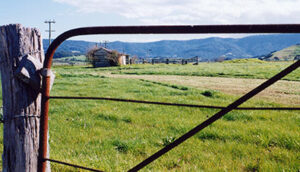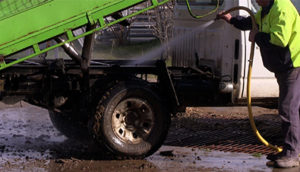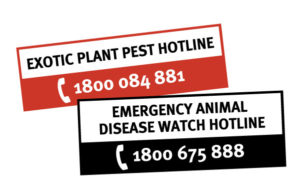Read the latest information on
Foot-and-mouth disease

When we talk about farm biosecurity, we almost always talk about it from an on-farm producer or growers’ perspective. However, as an agronomist, vet or contractor visiting multiple sites, you can unintentionally carry pests, diseases and weeds off the farm and between sites.
Concerned? With a few adjustments to your off-farm biosecurity practices, you can help reduce the spread of pests and diseases.
The basics
When arriving at a property, do not enter without permission of the owner or manager. From there:
 There may be situations where it’s impractical or not possible to carry out biosecurity actions such as washing down your vehicle. In these instances, you must consider your biosecurity actions are proportional to the risk involved. Think about the last few sites you’ve been to and speak to the owner or manager to make sure you’re both on the same page.
There may be situations where it’s impractical or not possible to carry out biosecurity actions such as washing down your vehicle. In these instances, you must consider your biosecurity actions are proportional to the risk involved. Think about the last few sites you’ve been to and speak to the owner or manager to make sure you’re both on the same page.
When visiting a property, make sure you record the important details of that visit. In the event of a pest or disease incursion, you should be able to ‘trace backwards’ using significant information such as dates, times, type of produce.
If you’re part of a larger business or organisation, it’s important to make sure your employees record this information in a consistent format.
Report anything unusual
 When working on a property, if you spot anything unusual in terms of pests, diseases and weeds, make sure you report it to the owner or manager. If they’re unfamiliar with what you’ve found, they’ll have to report it to the Emergency Animal Disease Hotline or the Exotic Plant Pest Hotline. Every report is checked out and treated confidentially.
When working on a property, if you spot anything unusual in terms of pests, diseases and weeds, make sure you report it to the owner or manager. If they’re unfamiliar with what you’ve found, they’ll have to report it to the Emergency Animal Disease Hotline or the Exotic Plant Pest Hotline. Every report is checked out and treated confidentially.
What do I do if I can’t do some of these practices?
Occasionally there will be situations where producers aren’t implementing on-farm biosecurity and may push back or resist when you engage in the biosecurity practices mentioned. It’s important to explain in these situations:
As a professional advisor or employee, there are some important aspects of on-farm biosecurity that you can carry out. Remember to be conscious of the responsibility that we all share and incorporate hygiene, record keeping, and reporting to help reduce the likelihood and impact of pests, diseases and weeds entering farms.